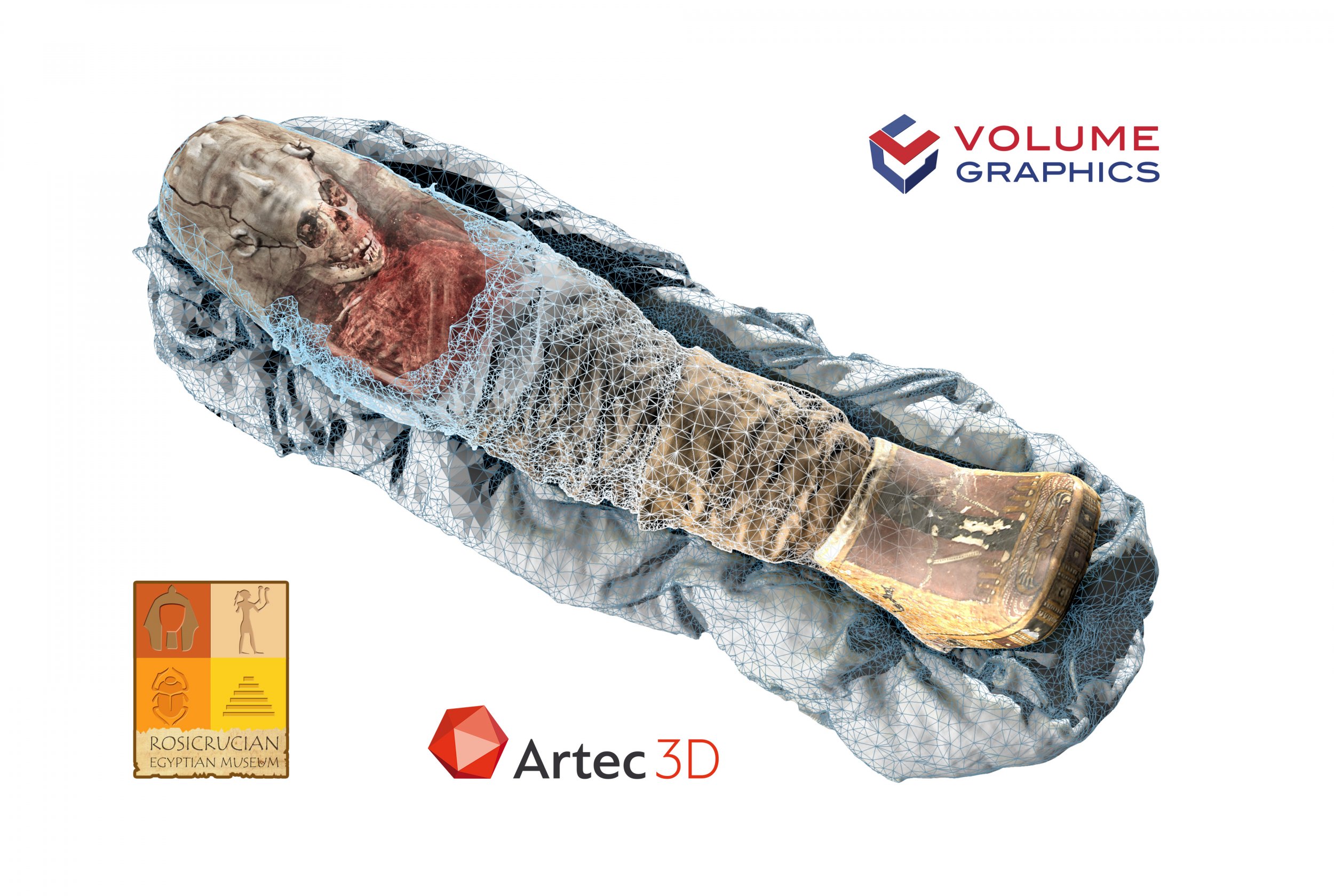
In a marriage of 3D scanning and CT scanning technology, you can now see inside the ancient mummy of a girl who died at five years old—without having to unwrap it.
The Rosicrucian Museum in San Jose, California, is home to a large collection of ancient Egyptian artifacts. That includes a 2,000-year-old mummy of a young girl, wrapped and adorned in traditional Egyptian funerary items. While her original name is unknown, scientists named her "Sherit," which meant "little one" in Ancient Egypt.
Before advancements in X-Rays, CT scanning, and 3D scanning, the only way to see inside a mummy was to unwrap it—and therefore partially destroy it. However, in 2005, this mummy went through a CT scanner and the details of her insides—wrappings, jewelry, and bones—became visible.
In conjunction with that imaging, the 3D scanning company Artec 3D created a hand-held 3D scanning device that documents, in detail, the shape, texture, and color of the outside of the mummy. The company combined the detailed, 3D-scanned outside with the CT-scanned inside using a computer program called Volume Graphics. Together, they made an advanced digital model of Sherit.
Even visitors of The Rosicrucian Museum can see inside Sherit. The scan has been uploaded to a program, so as you hold the museum's iPad over the mummy and move it along the body, you can see what's inside displayed on the iPad's screen.
3D and CT scanning is ideal for digitally documenting things without disrupting them. Artyom Yukhin, CEO of Artec 3D, told Newsweek that the handheld 3D scanning device is ideal for medicine, museums, and heritage preservation.
"Previously, 90 percent of all information was lost information was lost immediately when excavation was done," Yukhin said of traditional excavation of archaeological sites. "Many artifacts were destroyed." By turning over and digging up historical and scientific items, you risk breaking them and losing the context of their placement. With scanning, you don't even have to touch it.
Furthermore, Artec 3D's new handheld device is more portable than a large 3D or CT scanner, and it can be brought basically anywhere, as long as you are able to change out the batteries. This is ideal for scientific study as well as preservation of scientific, cultural, and artistic items.
Artec 3D is currently expanding their network to create similar interactive experiences with different museums. "Many, many museums can do the same and it is just cool," Yukhin said. "Not only with mummies, but with many different types of artifacts.
Uncommon Knowledge
Newsweek is committed to challenging conventional wisdom and finding connections in the search for common ground.
Newsweek is committed to challenging conventional wisdom and finding connections in the search for common ground.
About the writer
Kristin is a science journalist in New York who has lived in DC, Boston, LA, and the SF Bay Area. ... Read more
To read how Newsweek uses AI as a newsroom tool, Click here.








